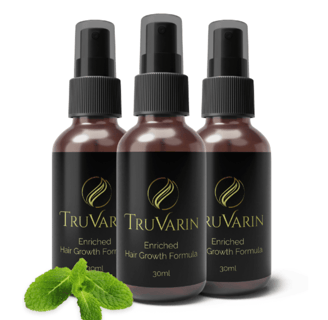The Ultimate Guide to Hair Growth: Proven Tips and Natural Remedies for Longer, Healthier Hair
1/29/20255 min read


Understanding Hair Growth: The Science Behind It
The process of hair growth is a complex biological phenomenon that can be divided into several distinct phases: anagen, catagen, and telogen. Understanding these stages is essential for grasping how hair grows and what aspects can influence this growth. The anagen phase, often referred to as the growth phase, can last anywhere from two to six years, depending on genetic predisposition. During this time, hair actively grows approximately half an inch each month. Genetics plays a significant role here, as individuals with a family history of long hair may experience prolonged anagen phases.
Following the anagen phase is the catagen phase, which is characterized by a transitional period lasting about two to three weeks. During catagen, hair follicles shrink and the hair strand detaches from the follicle, preparing for eventual shedding. The final stage is the telogen phase, a resting phase lasting around three months. At the end of this phase, the hair follicle will shed the old hair and eventually enter a new anagen stage with a fresh hair strand.
Key Factors Influencing Hair Growth
Hair growth is a complex process influenced by various factors, including nutrition, scalp health, and hair care practices. Understanding these elements can provide insight into how to promote longer, healthier hair more effectively.
One of the primary ingredients for optimal hair growth is a balanced diet rich in specific nutrients. Key vitamins and minerals play a critical role in the hair growth cycle. Biotin, also known as vitamin B7, has been extensively studied for its beneficial effects on hair health. This water-soluble vitamin helps strengthen hair follicles, reducing hair fall and promoting new growth. Incorporating biotin-rich foods such as eggs, nuts, and whole grains into your diet can support your hair health.
Additionally, vitamin D is essential for maintaining a healthy scalp and follicles. Research has shown that adequate vitamin D levels can stimulate the hair growth phase and create new follicles. Foods such as fatty fish, fortified dairy products, and exposure to sunlight are excellent sources of this vital vitamin.
Furthermore, omega-3 fatty acids contribute to scalp health by nourishing hair follicles and reducing inflammation. These healthy fats are found in fatty fish, flaxseeds, and walnuts, and they help maintain hydration, promoting softer and shinier hair.
The importance of maintaining a clean and healthy scalp cannot be overstated. Regular cleansing removes buildup from hair products, oil, and dead skin cells that can clog hair follicles and hinder growth. Engaging in a well-structured hair care routine that includes gentle cleansing, conditioning, and occasional exfoliation can enhance scalp health. Furthermore, minimizing the use of harsh chemicals and heat styling tools can prevent damage, fostering an environment conducive to hair vitality.
Natural Remedies for Hair Growth: Essential Oils and DIY Treatments
Natural remedies for hair growth have gained popularity due to their holistic approach and affordability. Essential oils, such as rosemary, peppermint, and lavender, have been researched for their potential to stimulate hair follicles and enhance growth. Rosemary oil, in particular, is known to increase circulation in the scalp, promoting better blood flow and nutrient delivery to hair roots. To utilize rosemary oil, mix a few drops with a carrier oil like jojoba or coconut oil and massage it into the scalp. This treatment can be performed two to three times a week for optimal results.
Peppermint oil also deserves a spotlight, as it contains menthol, which provides a cooling sensation and enhances blood circulation. Since peppermint oil can be quite potent, it is recommended to dilute it with a carrier oil before applying it to the scalp. A simple recipe includes combining a few drops of peppermint oil with almond oil, which not only nourishes the scalp but also adds shine to the hair. Regular application may lead to noticeable improvements in hair thickness and growth over time.
Lavender oil is another valuable addition to hair care routines. Known for its calming properties, lavender oil can also help with reducing stress-related hair loss. To create a soothing hair mask, combine equal parts of lavender oil, aloe vera gel, and honey. Apply this mixture to the scalp and hair, allowing it to sit for 30 minutes before rinsing. Aloe vera's moisturizing properties complement honey's humectant benefits, resulting in hair that is both nourished and revitalized.
In addition to essential oils, DIY hair masks can further support hair growth. A nourishing mask can be created using ingredients like coconut oil, known for its ability to penetrate the hair shaft, and avocado, rich in vitamins and healthy fats. By blending ripe avocado with coconut oil, you can make a creamy mask that promotes hydration and elasticity. Apply this mask once a week to support your hair growth journey naturally.
Addressing Common Hair Loss Issues: Solutions and Treatments
Hair loss is a prevalent concern that affects individuals across various demographics, with several underlying causes leading to different types of alopecia. Among the most common types are androgenetic alopecia, alopecia areata, and traction alopecia. Understanding these conditions is essential for selecting effective treatments and solutions to promote hair growth.
Androgenetic alopecia, often referred to as male or female pattern baldness, is characterized by a gradual thinning of hair, typically starting at the temples or crown. This condition is usually linked to genetics and hormonal changes. Effective treatments include minoxidil, a topical medication that encourages blood circulation to the hair follicles, and finasteride, an oral medication which helps inhibit hormone-related hair loss. For individuals seeking non-medical options, laser therapy devices offer a promising alternative by stimulating hair growth through light technology.
Alopecia areata is an autoimmune disorder that causes sudden patchy hair loss. The exact cause remains unclear, but it is believed to involve the body's immune system attacking hair follicles. Treatment options for alopecia areata include corticosteroids to reduce inflammation, topical immunotherapy, and in some cases, natural remedies such as essential oils or nutritional supplements aimed at strengthening hair health.
Traction alopecia results from prolonged tension on the hair due to styles that pull at the roots, such as tight hairstyles. Prevention is crucial, and individuals can mitigate this risk by opting for looser hairstyles and minimizing the use of hair extensions. Treatment may involve adopting a healthier hair care routine, incorporating nourishing products, and in severe cases, seeking professional consultations for restorative options.
By addressing these common hair loss issues, individuals can gain a clearer understanding of their conditions and explore the most suitable treatment options. There are numerous effective strategies available that can lead to improved hair growth and overall hair health.
Why TruVarin is the Game-Changer for Hair Growth & Confidence
TruVarin isn’t just another hair growth product—it’s a breakthrough formula designed for maximum absorption and results. Using patented PurZorb technology, this fine mist spray delivers full-spectrum hemp extract with high levels of varins directly to your scalp, making it up to 79% more absorbable than traditional oils. It’s lightweight, non-greasy, and infused with peppermint, leaving a refreshing, cool tingle without any chemical smell. Plus, it supports hormonal balance, helping you feel as good as you look. No messy foams, no waiting—just spray, go, and watch your confidence grow along with your hair!




Wellness
Your destination for Wellness, heath & Fitness, Your journey start here
Trust
contact@eleganbeautybrand@gmail.com
© 2024. All rights reserved.


